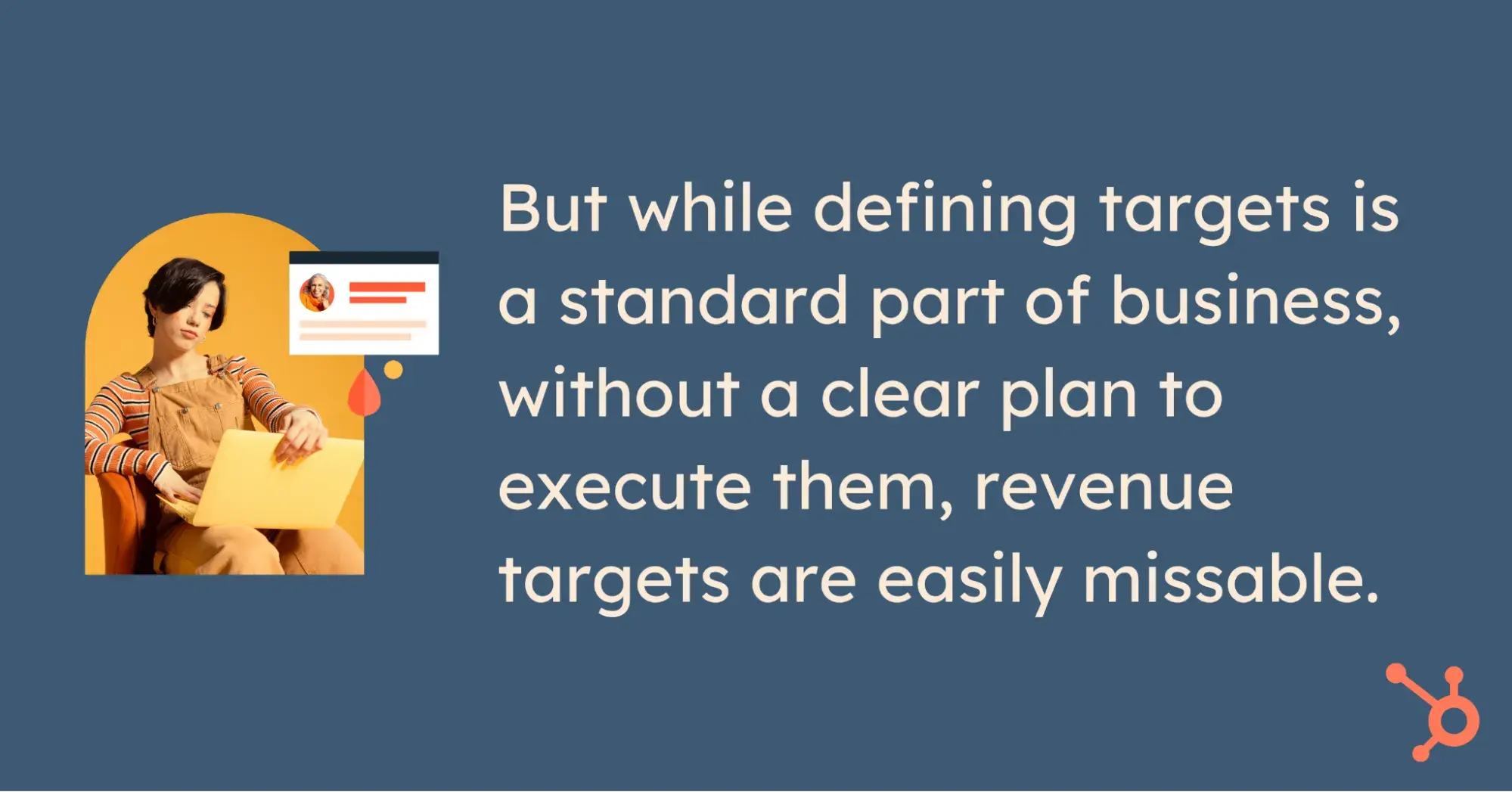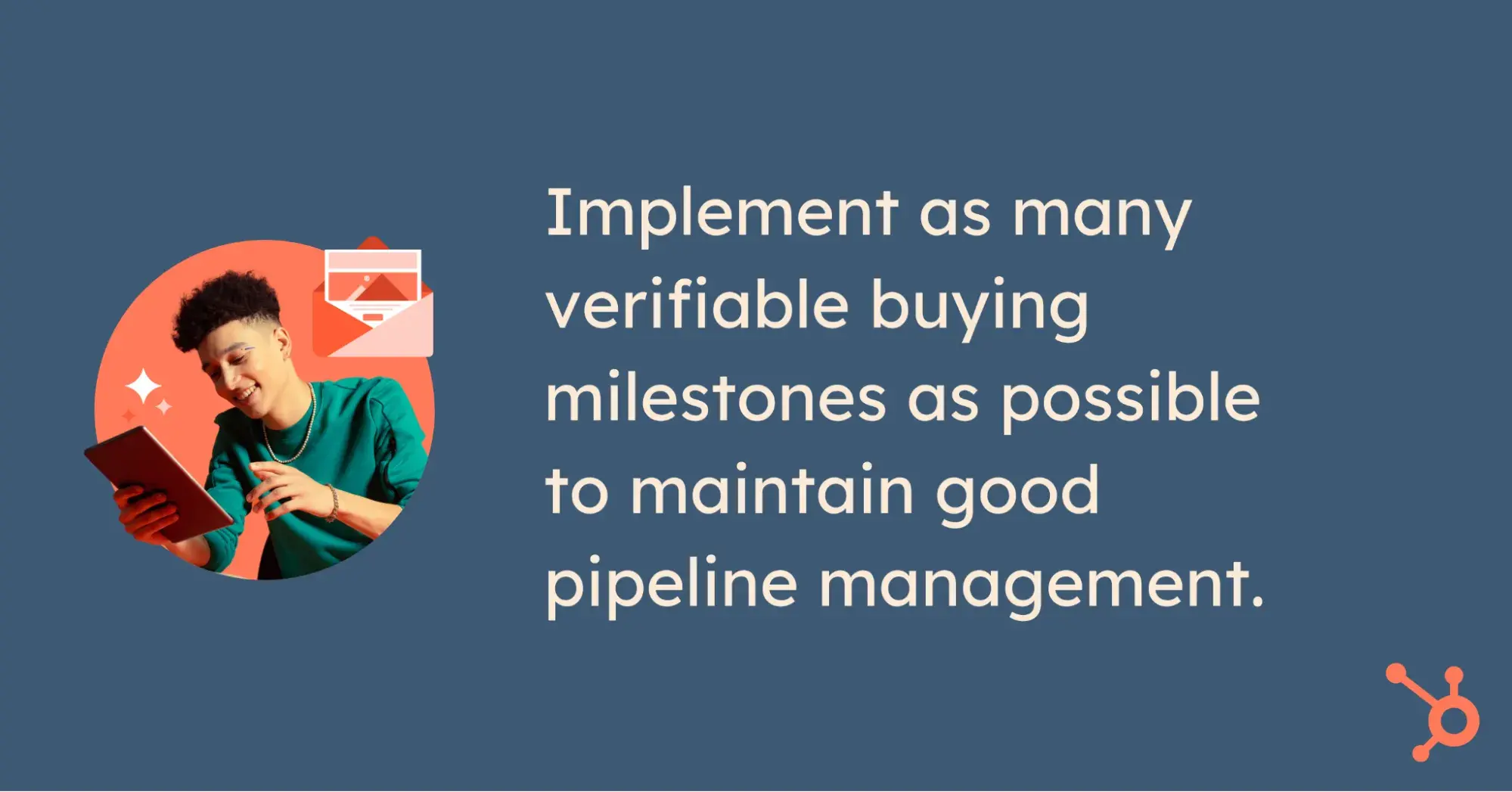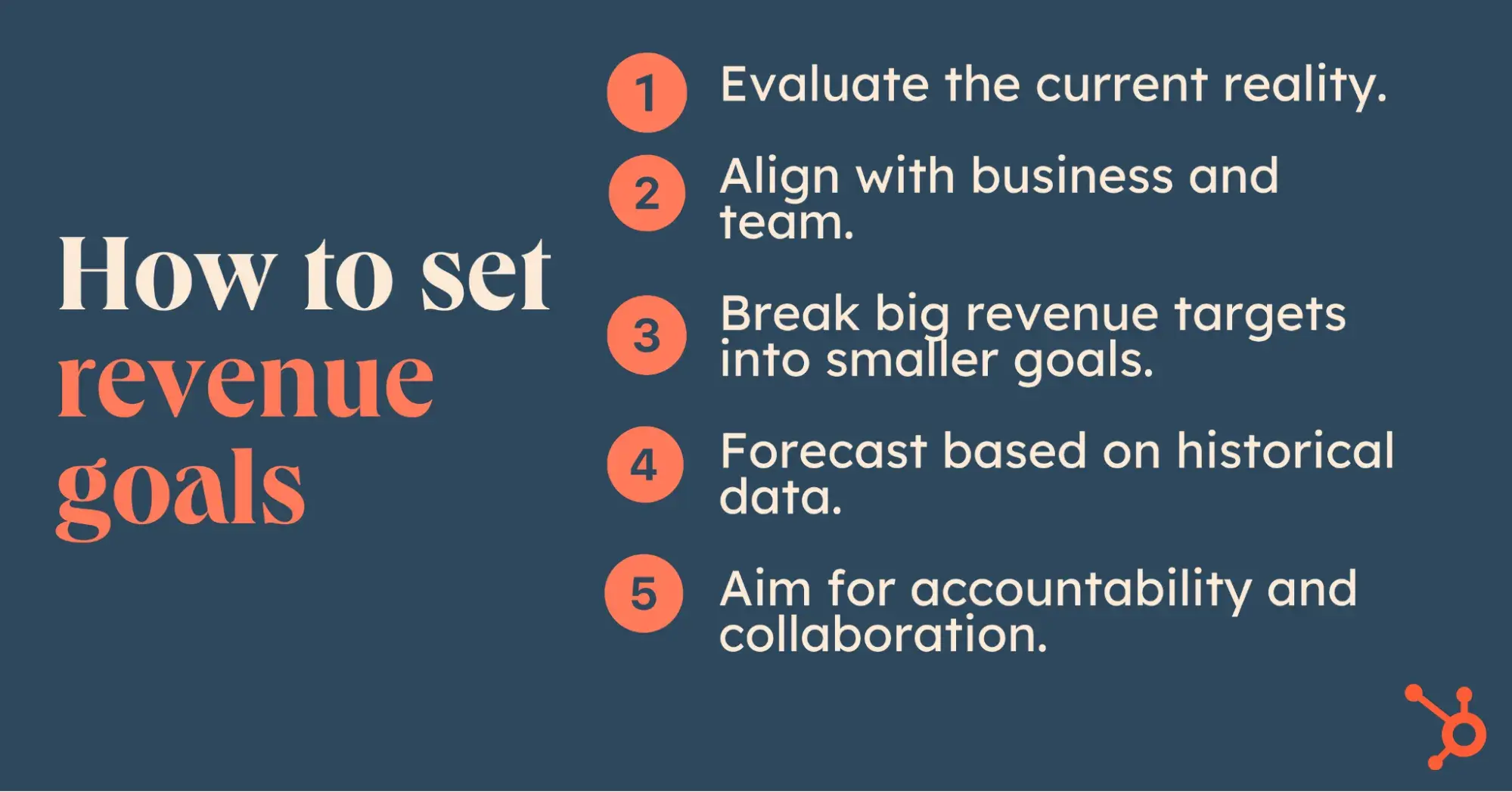Table of Contents
- What are revenue targets?
- Why Teams Miss Revenue Targets
- How to Set Revenue Goals
- How to Meet Revenue Targets
What are revenue targets?
Revenue targets are sales earnings that a company wants to achieve in a given period. These are measurable and can be broken into years, quarters, months, or weeks. Setting these targets relies on past performance data, current market trends, and forecasted sales.
A revenue target takes into account what you made in a prior period (say, last year) and aims to increase it by a specific percentage (for example, 10-20% more than last year’s actual revenue). The same logic can be applied to annual recurring revenue (an ARR target), if your company is subscription-based.
But while defining targets is a standard part of business, without a clear plan to execute them, revenue targets are easily missable.

Why Teams Miss Revenue Targets
Here are the reasons many companies miss their annual revenue targets, from my perspective.
1. Getting stuck on YTD sales.
This begins at the sales rep level but can become an enterprise-wide problem when sales staff, from reps up to SVPs, focus on their year-to-date (YTD) positions against quota. However, the only benefit of focusing on YTD is to realize how much of the mountain is left to be climbed.
Salespeople would be better served to look ahead. Projecting a sales cycle ahead of time gives sellers a better chance of making their numbers. It’s relatively straightforward to do — simply take your current pipeline, multiply the gross at each milestone times your historical close rates (actual or estimated), and determine if a seller can reasonably expect to be YTD one sales cycle ahead.
Let’s say your average sales cycle is three months. Having just finished the first quarter, you’d like the projection for the coming quarter, plus your YTD achievement for the completed quarter, to equal half your annual quota. If there’s a shortfall, there should be ongoing efforts to find and bring new opportunities into your funnel.
Ideally, these calculations should be done every month, and using a forecasting software can simplify this step.
2. Misaligned sales activities.
Companies spend inordinate amounts of time and money on training sellers on products. But mid- to low-level buyers have the tools to evaluate offerings on their own — in fact, 96% of prospects do their own research before talking to a human sales rep. On top of that, B2B buyers are wary of sellers trying to influence their decisions.
Few executives have the time or desire to go into details about products. But A-game players can uncover executive business goals and focus on how offerings can be used to achieve them.
In my mind, the most important thing competent B2B sellers bring is an understanding of enterprise-wide benefits that can be realized through the use of their offerings.
If sellers can articulate benefits and discuss how the company’s financial picture can improve, the chances of making sales are higher. I wish vendors would look at their product training costs and reallocate some funds to make their sellers better business consultants.

3. Confusing activity with progress.
B and C sales players typically initiate opportunities at low levels, view everyone as a buyer, lead with product, don’t gain access to key stakeholders, fail to uncover business issues, and don’t establish value with compelling costs vs. benefit analyses.
They will make numerous calls (activity) but aren’t gaining access to stakeholders (progress). They often provide quotes or proposals (activities) far sooner than they should. Sadly, many of these sellers believe opportunities are much farther along than they actually are.
Make sure your sales team knows the difference between activity for the sake of activity, and activity that will actually move a deal forward at the right pace and right time.
4. Relying upon seller opinions when grading pipeline health.
Some sellers have unbridled optimism when it comes to their pipeline health — whether or not it’s based in reality.
The antidote to relying upon seller opinions? Implement as many verifiable buying milestones as possible to maintain good pipeline management.
Here’s an example I like: Within the CustomerCentric Selling® sales methodology, the first significant milestone is qualifying a champion (someone who can provide the seller access to other key players). This is one of many measurable activities that a manager can use to grade the opportunity objectively — and tie to a milestone achievement.

5. Defining only one set of milestones.
A common mistake I see companies make is defining sales pipeline stages for major opportunities and expecting sellers to use them for each and every deal.
Sellers working on smaller opportunities soon discover they are being asked to enter far more data and take many more steps than are warranted in the scenario. In such cases, sellers rightfully complain or refuse to adhere to the milestones.
Most organizations have at least five or six processes that warrant unique milestones:
- Add-on business
- Renewals
- Services
- Maintenance
- SMB sales
- Large accounts
- National accounts
- Etc.
First, I recommend you define your most complex sale, but then “water down” the steps needed as opportunity size and complexity decrease.
Transaction milestones should meld the prospect’s buying process with the vendor’s selling process. Failing to incorporate buying steps means forcing your sales process onto the buyer — which is not a very customer-centric thing to do.
How to Set Revenue Goals
The first step to hitting your revenue targets is setting appropriate goals.
“Meeting sales targets highly depends on how the targets are set,” says Alex Zlotko, CEO of Forecastio, a tool for sales leaders to track and forecast sales performance.
“If sales targets are not reasonable or attainable from the start, they will not be met regardless of how well a sales rep performs.”
With that in mind, here are five steps for setting attainable revenue goals.

Evaluate the current reality.
It’s not uncommon for teams to set goals based on optimism, overestimation, or ambition without considering the reality of their past performance or the current market. But setting realistic, achievable, and clear goals that are based on data is the foundation for meeting your targets.
“I once worked with a company that raised its revenue goal by 40% overnight without adding more resources. Predictably, they missed it by a mile,” offers Danny Ray, founder of PinnacleQuote.
I asked Zlotko to tell me more, and here’s what he had to say: “Setting realistic and achievable sales quotas is one of a sales leader's key responsibilities. However, many sales leaders still struggle with this task, relying on gut feeling or intuition rather than real data when setting targets. Sometimes, sales targets are simply set by senior management (CEO) without discussion. This is a major issue in many companies.”
Align with business and team.
Next on the list is to align your revenue goals with your business objectives, making them specific, measurable, and tied to how you want to see your company grow. In addition, make sure your sales team understands the importance of their KPIs.
“I align revenue goals with broader business objectives, whether it's entering new markets or scaling existing operations,” Jayanti Katariya, CEO of Moon Invoice, tells me.
“A critical step is dividing these goals into achievable, quarterly targets while ensuring the team understands how their KPIs link back to the overall revenue plan.”
Break big revenue targets into smaller goals.
While dividing annual goals into quarterly and monthly ones is important, so is breaking down big revenue goals into smaller, more actionable ones. This increases the likelihood of meeting the larger goals, and also lets your reps build confidence with incremental wins.
Stephen Do, founder of UpPromote, says, “If the target is $1 million for the quarter, we’ll look at how much of that should come from new customers, upsells, or partnerships. This keeps the team focused on specific levers they can pull instead of getting overwhelmed by the bigger picture.”
Forecast based on historical data.
Data-driven forecasting is key to setting realistic revenue goals, drawing from your company’s historical performance data and also identifying areas for growth within the market.
Zlotko gave me a list of factors to consider.
“For short-term targets like a month or a quarter, take into account:
- Past team performance and recent trends (sales volume, quota attainment, win rate, and pipeline growth dynamics).
- Current pipeline. Assess deals by stage, amount, and close date for the period in which you want to set targets.
- Sales forecasts. Build the most accurate forecasts possible, preferably using multiple forecasting methods, including statistical models, rather than relying solely on data entered by sales reps (deal probability or forecasting category).
For setting long-term targets, I highly recommend using what-if modeling to create different scenarios and estimate what is needed for each.”
Among the factors to consider for annual goals are team capacity to hit targets, lead generation requirements, territory capacity, and market dynamics.
Aim for accountability and collaboration.
While setting a revenue target is often top-down, discussing the targets with sales reps to form a common objective can generate accountability and keep the team focused.
Gauri Manglik, CEO and co-founder of Instrumentl, describes an example of this best practice in action:
“When I led a sales team where we set quarterly revenue targets that were both ambitious and attainable,” she says, “we made sure to involve the team in the goal-setting process, allowing them to provide valuable insights and feedback. This not only increased their ownership of the targets but also fostered a sense of accountability and motivation.”
How to Meet Revenue Targets
Setting revenue targets is one thing, but what about meeting those goals?
“Ultimately, hitting revenue targets is a mix of strategy, execution, and adaptability,” says Stephen Do. “You need to set clear, data-driven goals, keep the team aligned, and stay flexible enough to pivot when necessary.”
Here are some strategies that stood out to me during my conversations with sales leaders.
Prioritize Communication.
A revenue target isn’t only the responsibility of sales. Marketing plays a role, as well as operations, and communication between all teams is a must to ensure everyone knows what’s expected of them and how they contribute to the overall goal.
Pro tip from Stephen Do: “Everyone on the team has to know their role in hitting the goal. If someone’s working on product updates, they need to understand how those updates will drive revenue — whether it’s improving retention or increasing conversions.”
Motivate your sales team.
Reaching revenue targets has to do with high quota attainment, which means each rep hitting their individual goals is key. “If a sales team isn’t hitting numbers, it’s usually because they lack clear direction, the right tools, or motivation,” says Danny Ray.
Pro tip from Jayanti Katariya: “Incentivizing sales teams through tiered performance rewards also ensures sustained motivation.”
Monitor and review.
There are a whole host of things to monitor along the way, from data to teams, in order to track progress and strategize accordingly.
Apart from sales dashboards and CRM, Alex Zlotko shares further insights. Here are his tips for this in his words:
- Monitor the pipeline regularly and identify risky deals. As soon as risky deals appear, take action.
- Track slipping deals, especially those that can impact targets significantly. If a close date is changed or a deal is pushed to a future period, you must know about it and react immediately.
- Monitor both team and individual performance, especially changes in win rates, sales cycles, and pipeline stage conversion rates. Spot negative trends early and address issues.
- Keep an eye on pipeline coverage daily. Is there still enough pipeline value to hit your targets? If not, what can you do? Generate more leads? Reactivate stagnant or stalled deals? Increase deal amounts?
- Conduct effective pipeline reviews and one-on-one meetings with your sales reps.
Be ready to adapt.
A big part of meeting your revenue goals will be adjusting to changes as they occur. It’s critical to be agile and able to pivot when things don’t go as planned.
Pro tip from Stephen Do: “We’ve learned to review our progress weekly, not just at the end of the quarter, so we can make tweaks before small issues become big ones.”
Hitting the Target
Whether you’re just starting out or a veteran of sales, setting and meeting revenue targets will always be an iterative process. And while it’s easy to see sales goals as elusive, I think the key is in getting used to predicting, monitoring, and changing gears — so that the next time you set revenue goals, they'll seem less like a moving target.






.jpg)



.jpg)
